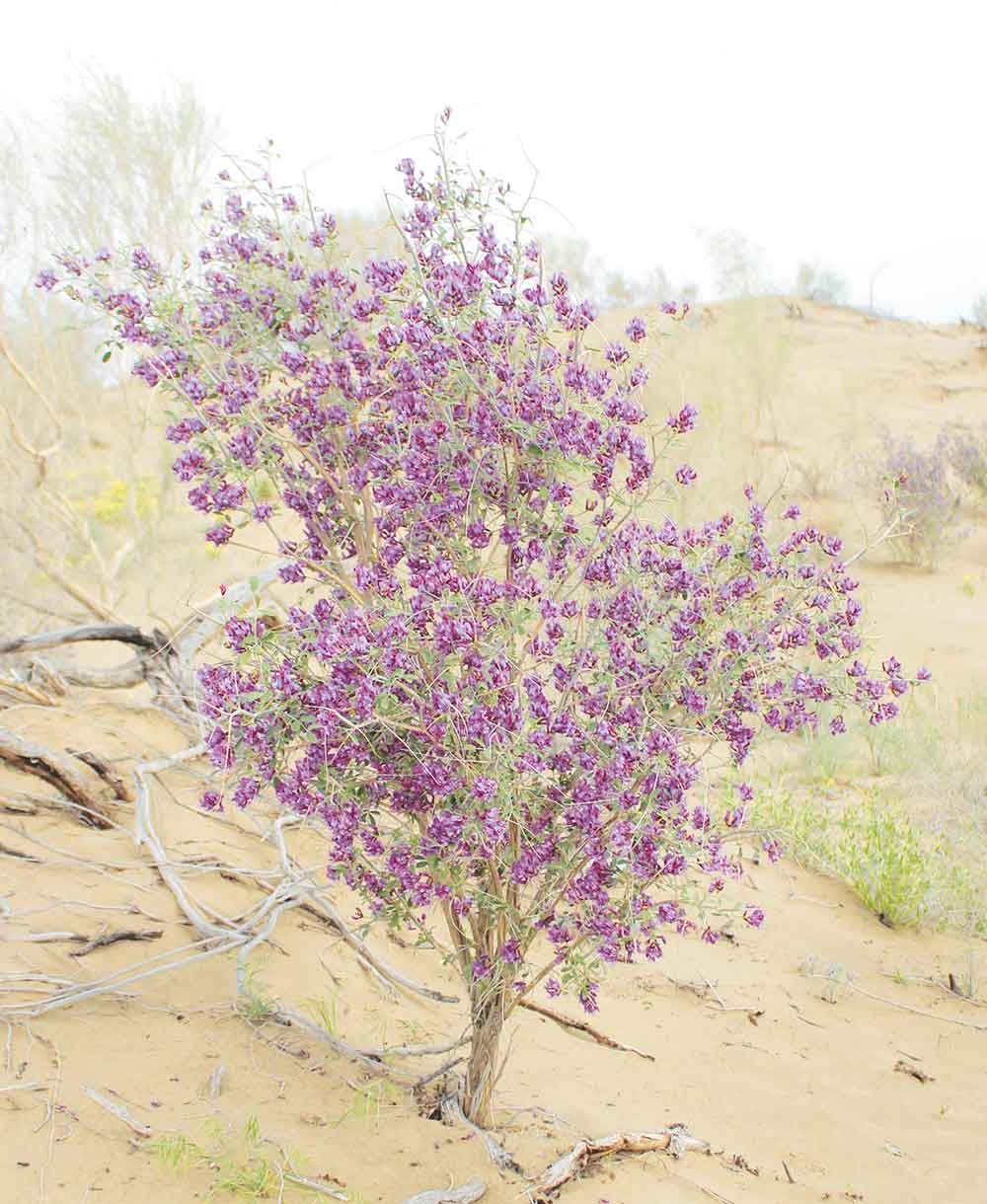In early spring, one can observe various astragalus species blossoming on the sand dunes, exhaling a subtle, exquisite delicate aroma. Less often, astragalus can be found at the foothills, where they do not “climb” high. The representatives of Astragalus alopecias that have fluffy spherical panicles-inflorescences are particularly beautiful; seven species are known, including Astragalus globiceps and Astragalus schahrudensis These large perennials up to 1 metre high with seven-centimetre inflorescences in diameter adorn flower beds. Astragalus macrobotrys with elongated inflorescences with pinkish-purple flowers that can be found in the sands has a peculiar form. The “inhabitant” of the Karakum Desert, Astragalus flexus blooms beautifully; its bright yellow large flowers form racemose inflorescences. The endemic gem of the nature of the Kopetdag Mountains is the cushion-shaped Astragalus podolobus. In the spring, during the blooming period, it resembles an impressive bunch of flowers – a fragrant pink-purple “ball” on the rocks, up to 80 centimetres in diameter.
Some of astragalus species are attractive during the fruiting period. Astragalus chiwensis is quite extraordinary; it reaches 70 centimetres in height and diameter in wet years. Shaggy leaves and racemes of swollen beans give the shrub its originality. Astragalus sericopetalus is an endemic plant of the mountains covered with extraordinary infructescences, and Astragalus sieversianus that is widespread in the mountains of Central Asia, has fruits that are similar to no representative of this genus – shaggy white balls the size of a tennis ball, densely stuck around the branches. During this period, the plants impressively stand out among their brethren with uniqueness and decorativeness. Compact astragalus species from the Kopetdag and Koytendag Mountains, for example Astragalus raddei with pinkish flowers, arouse fascination. During the fruiting period, its beans are enclosed in bubble-like swellings due to the growth of calyxes. The large perennial Astragalus maximowiczii with yellowish flowers that grows in the southeast of the country is extraordinarily beautiful. When cultivated, flowering and fruiting of cushion tragacanths blossom and bear fruits in 3 to 7 years of cultivation.

